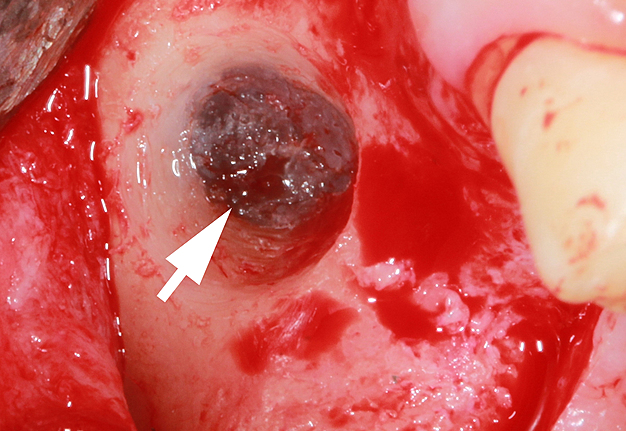September 30, 2020
https://doi.org/10.23999/j.dtomp.2020.9.4
J Diagn Treat Oral Maxillofac Pathol 2020;4:178.
Under a Creative Commons license
HOW TO CITE THIS ARTICLE
Nagorniak IV. Lateral sinus lift. J Diagn Treat Oral Maxillofac Pathol 2020;4(9):178.
Contents: References (6)
Maxillary sinus grafting was proposed by Boyne in 1960s for the prosthetic purposes. 1 Later it became an open (synonyms: direct and lateral) technique for sinus membrane elevation developed in 1970s by Tatum. 1,2
This technique successfully evolved to the two-stage procedure (1980) 3 with blade-vent implant placement and to one-stage sinus lift with root implant placement (1986) 4 .
In 1994, a new chapter in sinus grafting was written by Summers who modified Tatum`s osteotome-mediated transcrestal lift 1 (ie, a closed, indirect or crestal sinus lift) proposing the transalveolar osteotome set`s technique 5 , which is considered to be more conservative (ie, less invasive) procedure than the lateral lift.
In 2001, Vercellotti et al offered to the world the piezoelectric bony window osteotomy and the Schneiderian membrane elevation 6 without a risk of its perforations and leaving undamaged the posterior superior alveolar artery. 1
Panels A (a 27-year-old male) and B (a 51-year-old male) demonstrate a complete osteotomy design for the lateral sinus floor elevation approach.
This technique is even more popular than repositioned bony window trapdoor and the top-hinge trapdoor technique.
Non-reflected (Panel A) and lifted (Panel B) Schneiderian membrane is indicated by arrows. Its other names are ‘maxillary sinus membrane,’ ‘mucoperiosteum 3 ’, and ‘ciliated bi-laminar mucoperiosteal membrane 2 ’.
Nowadays, the sinus lift is ferociously expanding the horizons, even in a combination with Le Fort I osteotomy and zygomatic implants. ■ DTJournal
REFERENCES (6)
- Younes R, Boukaram M. Lateral sinus grafting approach: overview and recent developments. In: Younes R, Nader N, Khoury G, editors. Sinus grafting techniques. Cham: Springer; 2015:65–103. Google Scholar
- Levine MH, Glickman RS. Maxillary sinus lift for osseointegrated implants. In: Kountakis SE, editor. Encyclopedia of otolaryngology, head and neck surgery. Berlin, Heidelberg: Springer, 2013:1583–86.
- Boyne PJ, James RA. Grafting of the maxillary sinus floor with autogenous marrow and bone. J Oral Surg 1980;38(8):613–6.
- Tatum HJr. Maxillary and sinus implant reconstructions. Dent Clin North Am 1986;30(2):207–29.
- Summers RB. A new concept in maxillary implant surgery: the osteotome technique. Compendium 1994;15(2):152:154–6.
- Vercellotti T, De Paoli S, Nevins M. The piezoelectric bony window osteotomy and sinus membrane elevation: introduction of a new technique for simplification of the sinus augmentation procedure. Int J Periodontics Restorative Dent 2001;21:561–7.



